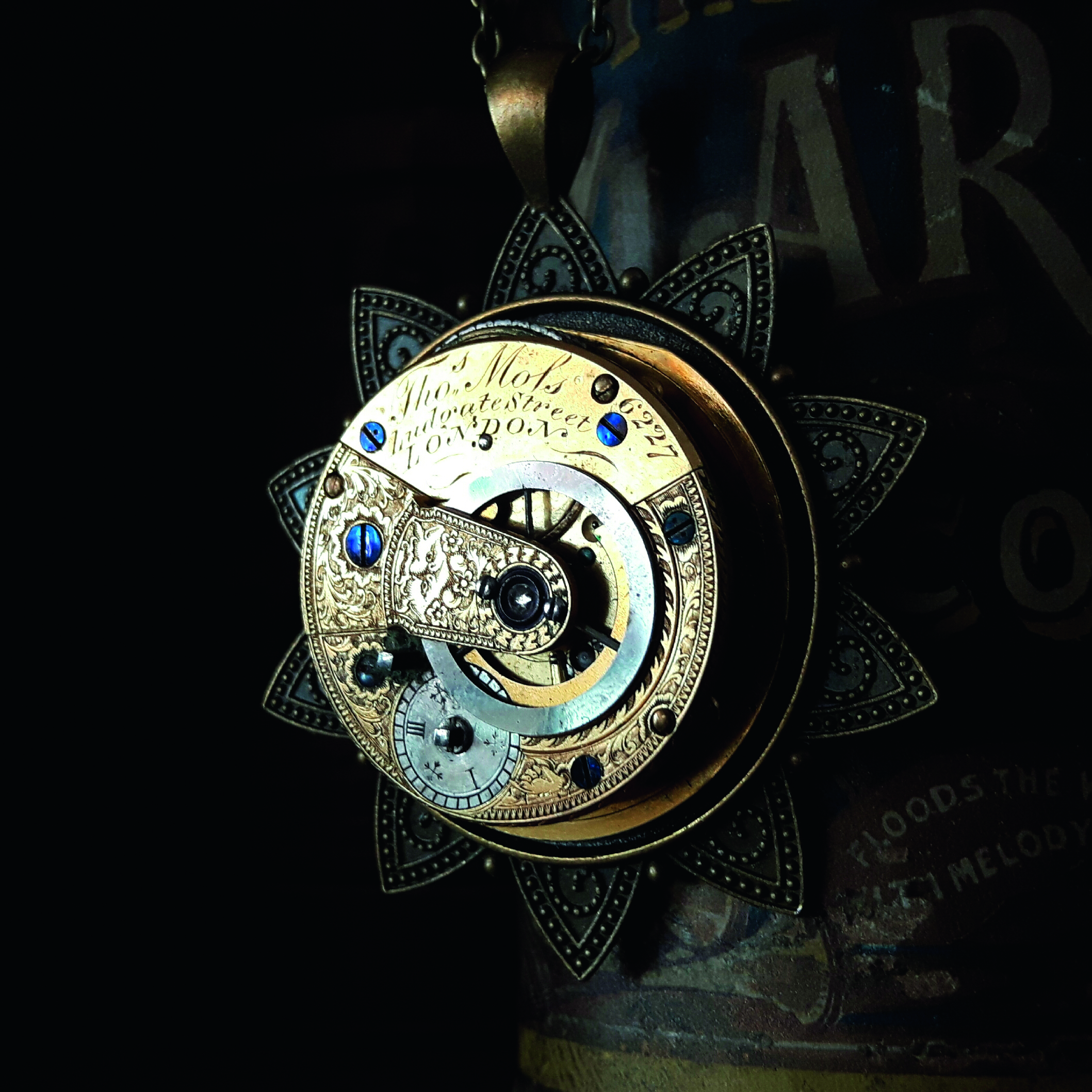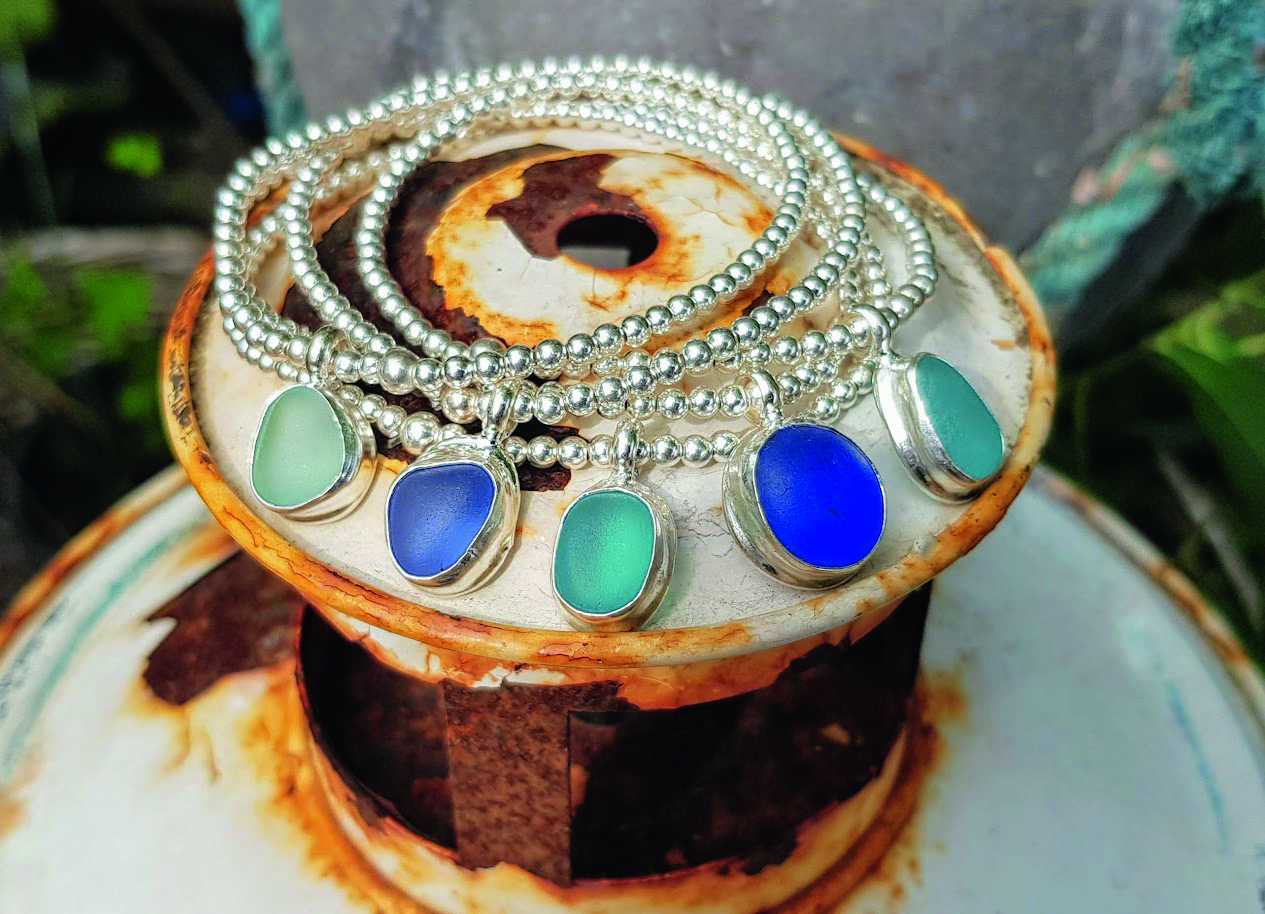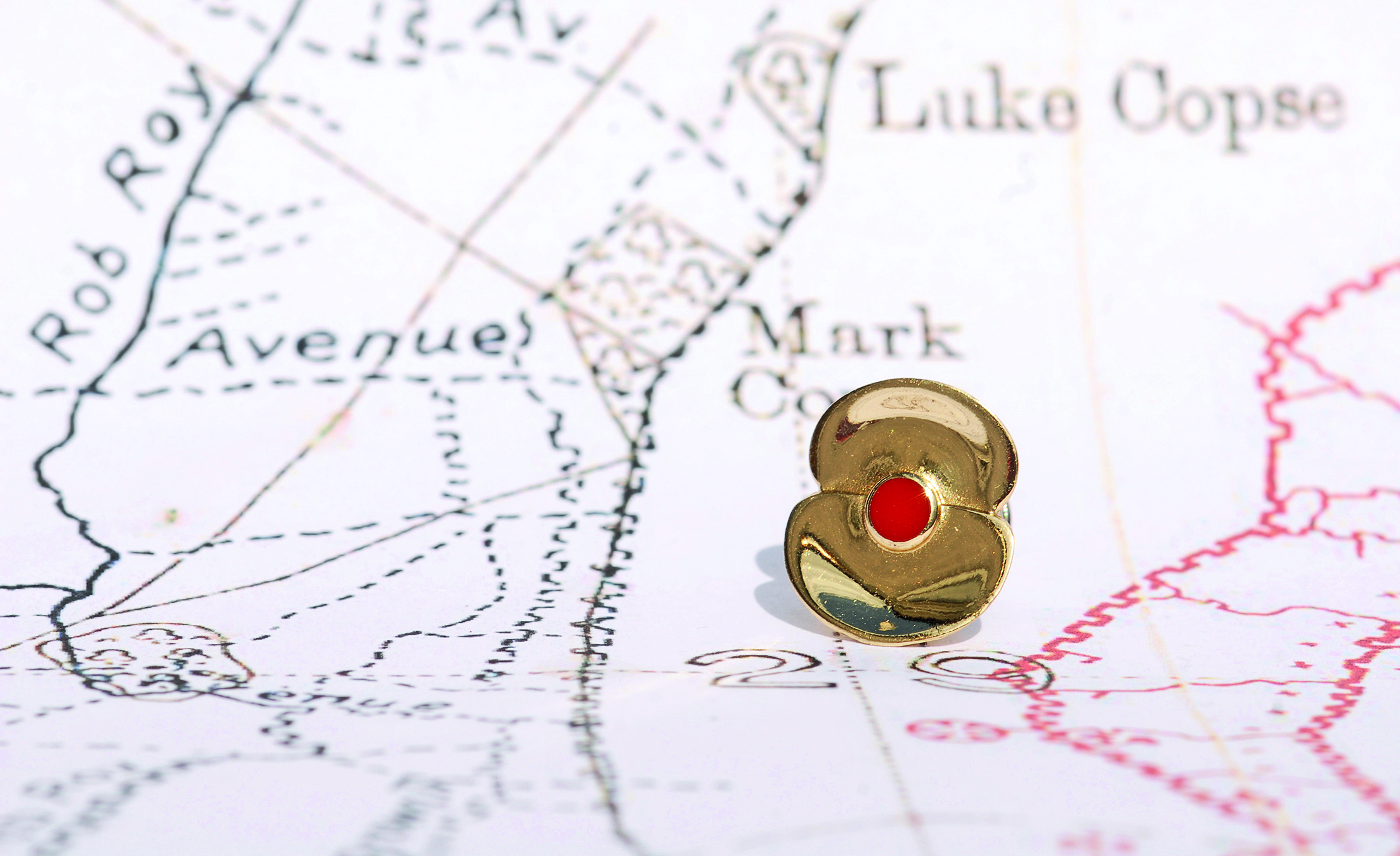Eco-friendly jewellery and accessories made from ‘sea diamonds’, computer wire and an unlikely kitchen utensil
In a world where everything is increasingly durable and worryingly disposable, those making quirky accessories from cast-offs are doing both the planet and our wardrobes a favour, says Claire Jackson.

Diamonds are forever—but so are many other, less obviously precious things. The permanence of most materials means that, after breakages and faded fashions, discarded items are likely to spend the rest of their long lives in landfill. For most of us, this is a place as distant as the lands of Enid Blyton’s Faraway Tree, but the reality of waste management means that even well-organised sites have an enormous environmental impact. The longer we can keep our possessions in circulation, the better.
‘Reduce, reuse, recycle’ isn’t a new concept, but, as our understanding of its importance grows, makers are increasingly focusing their efforts on repurposing existing elements into new and exciting pieces. There is an abundance of jewellery and accessories that have lived former lives; some obvious, some obscure. A shoreline forage or a charity-shop rummage can set the imagination free. In this brave new world, vintage buttons are a girl’s best friend.
Beach diamonds are forever
The cabinets in Coastal Silver’s shop sparkle. The light catches pendants and earrings; they glint blue and green. From a distance, the centrepieces could be sapphires and emeralds, but, close up, they appear polished rather than cut. The ‘jewels’ are sea glass, old fragments of rubbish that have been tossed about in the waves for many years before being harvested by silversmiths such as Andrea and John Warnock, their children Emily and Jack—and Flossy, the Parson Russell terrier.
The Warnocks’ findings are set in a variety of ways, from simple casings to animal shapes. ‘If you can draw it, we will make it,’ confirms Mrs Warnock. Coastal Silver, which opened in 2016, offers a wide range of jewellery, but its speciality is sea glass—or ‘beach diamonds’.
Like diamonds, sea glass is graded and there is a hierarchy of rarity. Olive greens and soft blues are scarce, citron and jade are rare, whereas red, turquoise and multi-coloured pieces are classed as ultra rare. Most of Coastal Silver’s treasures come from Cleethorpes in Lincolnshire, where the business is based, but the family sources glass from across the UK.

Among the cornflower blue and translucent white are flashes of yellow, red and the odd rainbow stone. These are the ultimate rarities, collected from Seaham, Co Durham, and nearby Sunderland, former sites of several Victorian and Edwardian bottleworks and glass-making factories—until 1921, Seaham was home to the Londonderry Bottleworks, the largest glass bottle works in Britain.
Sea-glass enthusiasts travel from all over the world in the hope of securing its unusual historic glass. Mr and Mrs Warnock are regular visitors and have gathered some gorgeous gems. ‘We also collect Codd marbles,’ says Mrs Warnock, showing me a jar filled with royal-blue orbs. ‘These were originally used as bottle stoppers to prevent carbonated drinks from going flat.’
Exquisite houses, the beauty of Nature, and how to get the most from your life, straight to your inbox.
There’s a romance to sea glass and it’s a popular choice for courting couples looking for an ethical alternative to traditional diamonds. ‘We make at least one engagement ring a fortnight,’ Mrs Warnock advises. ‘We get a lot of people who have glass set that they found on their honeymoon and use 100% recycled UK silver, so the entire piece of jewellery is made from existing materials.’
Coastal Silver ( www.coastalsilver.co.uk)
Forking out
One of the more unusual items in my jewellery box is a silver bangle that ends in a wavy and pronged flourish. It’s an inevitable conversation starter, with observers noticing the unorthodox fixed shape and formerly utilitarian aspect—the bracelet was once an unloved fork, destined for the bin, which, with some imaginative bending, has found a new life.
Makers such as Simon Thomas, who started Simon Says Fork Out, are turning all sorts of unloved cutlery, not only forks, into a range of accessories. ‘I use the unwanted odds and ends,’ says Mr Thomas. ‘I buy a lot from eBay—everything that comes through the post rattles!’ Designs vary from feathered forks, where the item’s original appearance is subtly preserved, to fish-knife bracelets where the source material is almost unrecognisable.

The idea of wearing something that looks like the product of an enthusiastic lunch with Uri Geller may seem rather futuristic. However, repurposing cutlery into jewellery is an Edwardian tradition that arose from servants ‘redistributing the wealth’ acquired in workplaces. Nowadays, the practice stems from not wanting to waste resources, as well as making beautiful bespoke pieces that have a story. The tiny, 18th-century salt spoons twisted into rings are far more meaningful than an ‘off-the-peg’ equivalent.
‘Jewellery is often very sentimental,’ believes Mr Thomas. ‘I once made a set of bracelets for a family from cutlery they had inherited from their grandmother. It’s lovely to make something that will be cherished for a long time.’
Simon Says Fork Out ( www.fork-out.co.uk)
A shell of its former self
Few accessories have a more powerful history than the brass poppies produced by TMB Art Metal to commemorate the Battle of the Somme centenary. The limited series—19,240 in total, one for every soldier killed on July 1, 1916—was commissioned by the Royal British Legion (RBL) and used materials such as shells recovered from the battlefield. The Every Man Remembered collection sold out in 2016, but pins pop up fairly regularly on eBay. The RBL is, however, currently selling a commemorative Second World War Armed Forces Pin, crafted from three reclaimed, original historic metals used by the Army, Royal Navy and Royal Air Force.

Shells aren’t the only military material to be featured in accessories. Family-run business Goofy Goat Gifts makes accessories from various items including bullets. An innocuous-looking pair of cufflinks features the .303 British rifle cartridge used by British troops during both World Wars and a .45 Colt—used in the iconic American revolver—makes an attractive pendant. Elsewhere in the quirky range, you will find vintage watch parts, coins and typewriter keys.
TMB Art Metal (www.tmbartmetal.com); Goofy Goat Gifts ( www.goofygoatgifts.com)
Totally wired
Disney-Pixar’s Wall-E imagines a deserted earth in 2805, inhabited only by the eponymous robot that has been left to tidy up the dumped rubbish, as the humans live on board a luxury spaceliner. The majority of the waste is tech-related, mirroring the situation we face today: in the UK, about two million tons of out-dated electrical items are disposed of each year.

Artist Alison Bailey Smith has found an inventive way to recycle a key component—her delicately woven millinery is made from television wire. The copper colour pops on a beautifully crafted flower-pot hat and her ‘swirls and curls’ hair clip integrates stainless-steel mesh and textiles. There’s a vibrant splash of a familiar purple on another clasp—chocolate wrappers are used to bolster the palette. Mrs Bailey Smith’s work is on display at the National Museums of Scotland Collection and is available to purchase via Etsy.
Alison Bailey Smith (www.abscraft.com)
As bright as a button
In Any Old Iron, an episode from the 1970 television series Steptoe and Son, Harold is gifted an unusual pair of cufflinks by suave antiques dealer Timothy Stanhope. Inspired by what Mr Stanhope perceives to be Harold’s lively interest in Florentine art, the bespoke cufflinks boast ‘Italian Renaissance buttons’. Watching the British sitcom in 2021, Alan Barnett wondered whether he could make something similar. ‘I pinned together some buttons and they sold right away. It was a light-bulb moment,’ he reveals.

Mr Barnett has since experimented with old watch straps and second-hand jewellery to create stylish lapel adornments and other menswear accessories. His fledgling business Victique Cufflinks also takes on commissions—Mr Barnett recently made an Albert chain for a groom. Men’s accessories needn’t be saved for special occasions, however. ‘I love cufflinks and I wish they were worn more often,’ the maker confesses. ‘They look great with a sharp suit—and more casual outfits, for both men and women. My son wore a pair with a round-necked jumper and Prada trainers and he said he’d never had so much attention!’ Most Victique cufflinks feature traditional chain mechanisms over the ubiquitous modern T-bar.
Mr Barnett scours eBay for potential pieces to repurpose. Using pliers and jump rings, he dissects his found curiosities, from vintage tassels to Edwardian enamel, and rebuilds them into functional pieces. The vintage porcelain buttons are fit for a king—or, indeed, Steptoe.
Victique Cufflinks (www.victiquecufflinks.co.uk)